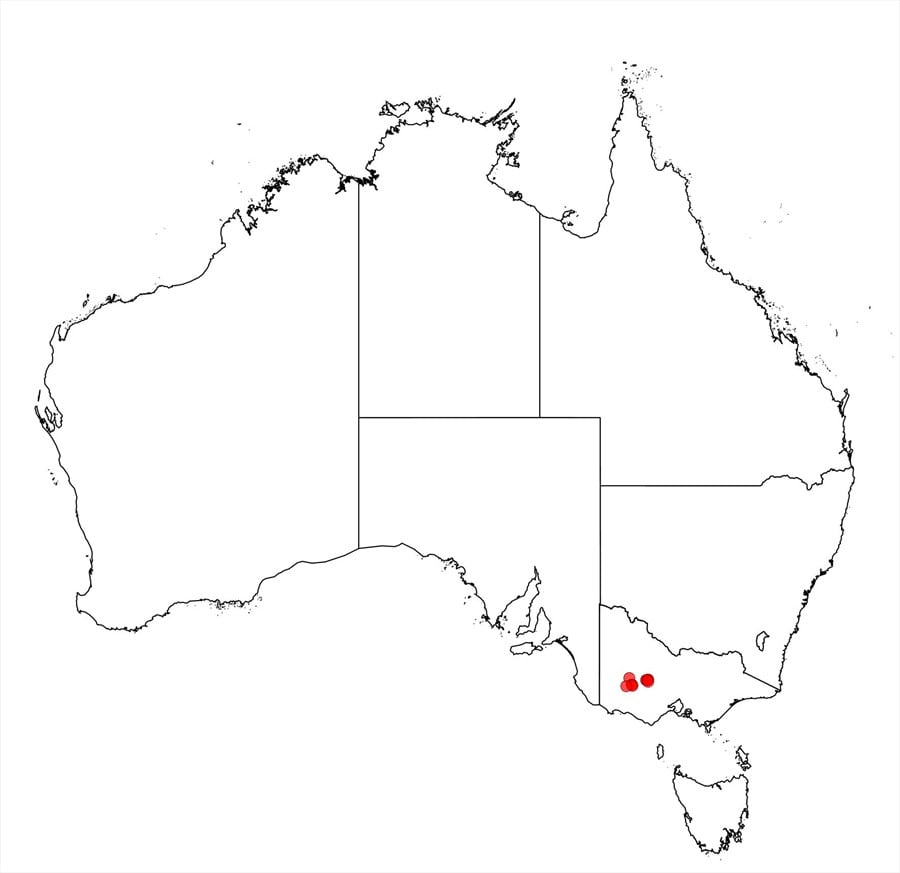Acacia leprosa var. crassipoda Maslin & D.J.Murphy
WATTLE
Acacias of Australia
Family
Fabaceae
Distribution
Endemic in Vic. where it occurs in the Grampian Ra. and about 50 km to the E, from the Pyrenees Ra. to the W Avoca.
Description
Spindly shrub 1.5–3 m tall. Phyllodes (40–) 50–90 (–120) mm long, (10–) 15–20 (–30) mm wide; with 2 longitudinal nerves of ±equal prominence; lateral nerves fine but reasonably evident when dry; gland 0–1 mm above the pulvinus, circular or elongated. Peduncles 2–4 (–5) mm long, often obscured by stamens at anthesis so that the heads superficially look sessile, densely puberulous-tomentulose with somewhat matted, ±appressed to widely spreading, straight to shallowly curved or sub-crisped hairs; basal peduncular bract caducous; heads large (8–10 mm when dry), (30–) 35–45-flowered; bracteoles visible (but not prominent) in mature buds, usually lanceolate, c. 2 mm long (exceeding the calyx but slightly shorter than the corolla), the laminae usually distinctly acuminate and longer than the claws.
Phenology
Flowers Aug.–Nov.; fruits Jan.–Feb.
Habitat
Grows in steep mountainous country in eucalypt forest, and forms a series of small disjunct populations; occurs in clay soils over sandstone or shale.
Specimens
Vic.: about 12 km W of Avoca P.O., A.C. Beauglehole 50246 (BRI, MEL); Mt William Rd, c. 4 km towards summit from Grampians Road, A. Paget 2549 (MEL – bracteoles smaller than normal); 5.6 km from Mt William car park, P.G. Neish 88 & A.M. Muasya (MEL, MELU).
Notes
Minor variation in bracteole morphology and phyllode apex shape are discussed in B.R.Maslin & D.Murphy, Muelleria 27: 209 (2009). May superficially resemble the fourth variant of var. graveolens from the Kinglake–Marysville which are distinguished most readily by phyllode glands which are normally 2–4 mm above the pulvinus.
FOA Reference
Flora of Australia Project
Author
B.R.Maslin
This identification key and fact sheets are available as a mobile application:
URL: https://apps.lucidcentral.org/wattle/
© Copyright 2018. All rights reserved.








